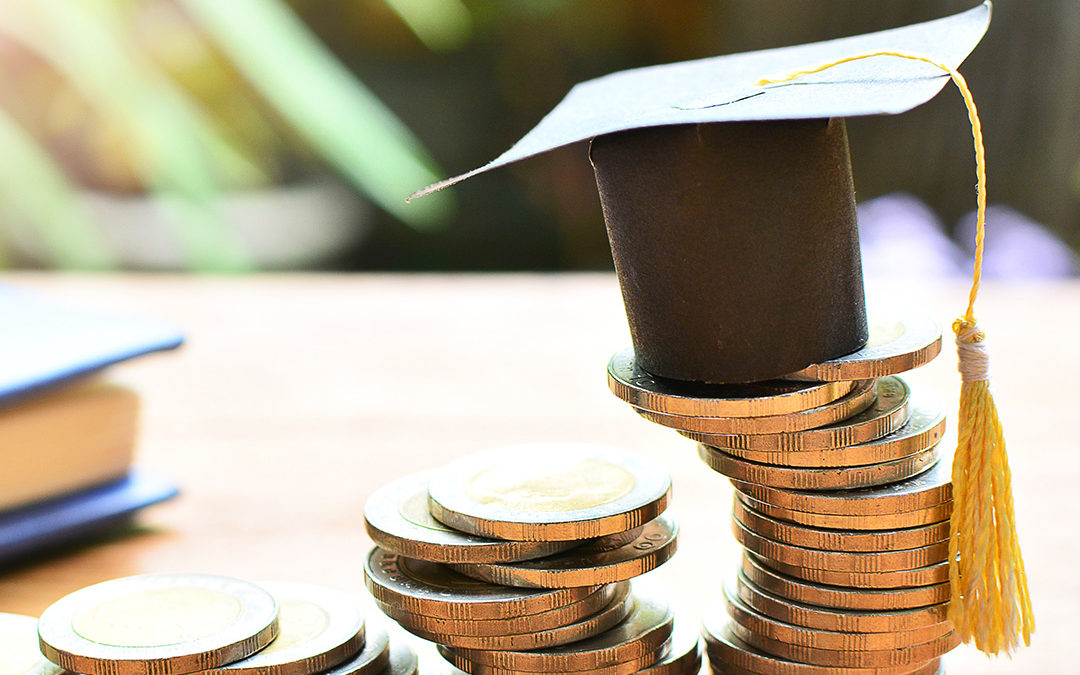Taking out student loans to pay for your education is usually a great investment. Despite the common refrain that college is a waste of time and money, the lifetime earnings of a college graduate are around $1 million higher than the earnings of a non-college graduate (U.S. Social Security Administration). It may not feel like it when you are struggling to pay $500 in student loans every month, but there are significant economic advantages associated with degrees in higher education.
Still, nobody wants to face tens or sometimes hundreds of thousands of dollars in student loans. Here are some tips for dealing with student loans and how to get rid of them faster and cheaper.
The burden of paying off student loans
Breaking free from student loans isn’t easy. According to the latest data from the Federal Reserve, the typical amount of student loan debt is between $20,000 and $24,999.
If you pay the loans back normally, you are responsible for a minimum monthly payment and you have to pay it. If you don’t, additional fees will be added, your credit score will take a tumble, and the government can even garnish wages, withhold tax refunds, and more.
Even if you declare bankruptcy, you’ll still have to pay your student loans. Unlike other types of debt, student debt doesn’t automatically get discharged after declaring bankruptcy. If you wanted to eliminate your student loans, you would have to work with a lawyer to file a separate action known as an “adversary proceeding.” You would need to prove that repayment would impose the legal standard of “undue hardship” on you and your dependents. This is technically a possibility, but it’s rare and difficult, so speak with a lawyer before deciding on anything. There are easier ways to lessen the burden of student debt.
So, let’s turn our attention over to the most efficient ways to pay off your student loan debt.
1. Calculate out how long it will take to pay off your student loan and the total interest.
You can use student loan calculators to learn how long it will take to pay off your student loan, including monthly payments and total interest paid. Try playing with different payment amounts to see how much you can save in interest if you increase your monthly payments.
For instance, if you are making $311 monthly payments on a $30,000 student loan with a 6% interest rate, it will take you 11 years to pay it off and you’ll end up paying more than $11,000 in interest alone.
If you are able to increase your monthly payment to about $500, you can pay off your entire loan in less than 6 years and pay much less in interest — around $5,500. The takeaway is to pay as much as you can every month so you can save money on interest payments and get out of debt faster.
2. Increase your monthly student loan payment and automate it.
Even if you only increase your monthly payment by $25 each month, you can potentially save thousands of dollars in interest payments. Figure out the maximum you are able to pay each month, and make sure the payment is automatic. Learn more about automating your monthly bills. If you have any questions, either your service provider or bank will be able to help you.
3. If you can’t pay your loan or have multiple loans, call your lender (or DebtBlue).
A free call to either your lender or DebtBlue will inform you of your options when it comes to structuring a better payment plan. All of your questions from “Can I defer payment?” to “Can I consolidate different loans?” can be answered. Usually, it’s pretty easy to change your minimum monthly payments or refinance your loan.
Consider Student Debt Consolidation
Consolidation loans will combine multiple loans into one loan from a single lender. For example, if you have multiple student loans, you can often combine them into one loan with a lower interest rate.
There are two types of loan consolidation for student debt — federal and private. Often, consolidating private student loans is called “refinancing.” The federal version of this is when you combine multiple federal student loans into a single federal loan. This is called a Direct Consolidation Loan and is done through the Department of Education. Keep in mind that this probably won’t lower your interest rate, although it may lower your payments. Thankfully, the application process is free and easy.
For personalized advice on dealing with debt, contact DebtBlue for your free, no-obligation consultation. Our team of certified debt specialists can help you make the best decision for your situation.

